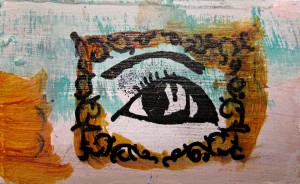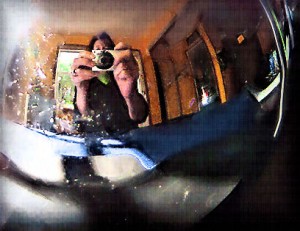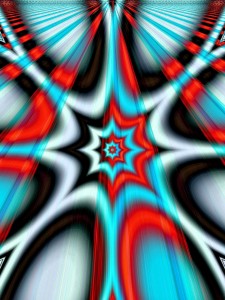The Craft of Creative Writing
Mondays Jan 26- Mar 9 7pm-9pm
Students are asked to
Bring a journal to class for notes and inspired writing
exercises.
Bring examples of the genre explored in the next session to share.
Be willing to share inspired writing.
Make only comments about others’ writing that are positive. Celebrate the artist in fellow class mates. If there is something which is unclear in another person’s writing, it is fine to say, “I couldn’t quite understand… or I had difficulty seeing…”
Every class will begin with an exchange of ideas and sharing of “treasures” that students how found in writing they love. There will be times before timed writings when the student is asked to sit quietly in order to become centered.
January 26th and February 2nd will be devoted to the Short Story.
February 9th and February 16th will be devoted to the Poem.
February 23rd will be devoted to Children’s Literature.
March 2nd and part of March 9th will Blogging.
March 9th will have part of the class devoted to analysis of the student’s strengths
as a writer.
January 26th
7 to 7:30 pm “getting to know”
Introduction of students to one another
Introduction of definitions for various genres
Questions to consider: write down your questions here for discussion.
Don’t let the follow information frighten you. It is just available as a referral. There is NO test. Have fun!!
Short Story
Wikipedia: The short story refers to a work of fiction that is usually written in prose, usually in narrative format. This format or medium tends to be more pointed than longer works of fiction, such as novellas (in the 20th and 21st century sense) and novels or books. Short story definitions based upon length differ somewhat even among professional writers, due somewhat in part to the fragmentation of the medium into genres. Since the short story format includes a wide range of genres and styles, the actual length is mitigated somewhere between the individual author’s preference (or the story’s actual needs in terms of creative trajectory or story arc) and the submission guidelines relevant to the story’s actual market. Guidelines vary greatly among publishers.
Many short story writers define their work through a combination of creative, personal expression and artistic integrity. As a result, many attempt to resist categorization by genre as well as definition by numbers, finding such approaches limiting and counter-intuitive to artistic form and reasoning. As a result, definitions of the short story based upon length splinter even more when the writing process is taken into consideration.
Prose is writing that resembles everyday speech. The word “prose” is derived from the Latin prosa, which literally translates to “straightforward”. Prose is an unpretentious form of writing; it is adopted for the discussion of facts and topical news. Prose is often articulated in free form writing style. Thus, it may be used for books, newspapers, magazines, encyclopedias, broadcast media, films, letters, history, philosophy, biography, and many other forms of communication.
Poetry and prose
Prose generally lacks the formal structure of meter or rhyme which is typical of poetry; instead it is composed of full sentences, usually divided into paragraphs. Although some works of prose may happen to contain traces of metrical structure or versification, a conscious blend of the two forms of literature is known as a prose poem. Similarly, poetry with less of the common rules and limitations of verse is known as free verse. Poetry is considered to be artificially developed (“The best words in the best order”), whereas prose is thought to be less constructed and more reflective of ordinary speech.[citation needed] Pierre de Ronsard, the French poet, said that his training as a poet had proved to him that prose and poetry were mortal enemies. In Molière‘s play Le Bourgeois Gentilhomme, Monsieur Jourdain asks something to be written in neither verse nor prose. A philosophy master says to him, “Sir, there is no other way to express oneself than with prose or verse”. Jourdain replies, “By my faith! For more than forty years I have been speaking prose without knowing anything about it, and I am much obliged to you for having taught me that.”
A narrative or story is a construct created in a constructive format (written, spoken, poetry, prose, images, song, theater or dance) that describes a sequence of fictional or non-fictional events. It derives from the Latin verb narrare, which means “to recount” and is related to the adjective gnarus, meaning “knowing” or “skilled“.[1] (Ultimately derived from the Proto-Indo-European root gn?-, “to know”.[2]) The word “story” may be used as a synonym of “narrative”, but can also be used to refer to the sequence of events described in a narrative. A narrative can also be told by a character within a larger narrative. An important part of narration is the narrative mode.
Along with exposition, argumentation and description, narration, broadly defined, is one of four rhetorical modes of discourse. More narrowly defined, it is the fiction-writing mode whereby the narrator communicates directly to the reader.
Stories are also a ubiquitous component of human communication, used as parables and examples to illustrate points. Storytelling was probably one of the earliest forms of entertainment. Narrative may also refer to psychological processes in self-identity, memory and meaning-making.
A genre (pronounced /????nr?/, also /?d???nr?/; from French “kind” or “sort”, from Latin: genus (stem gener-)) is a loose set of criteria for a category of composition; the term is often used to categorize literature and speech, but is also used for any other form of art or utterance.
Genres are vague categories with no fixed boundaries, they are formed by sets of conventions, and many works cross into multiple genres by way of borrowing and recombining these conventions. The scope of the word “genre” is sometimes confined to art and culture, particularly literature, but it has a long history in rhetoric as well. In genre studies the concept of genre is not compared to originality. Rather, all works are recognized as either reflecting on or participating in the conventions of genre.
Short stories have their origins in oral story-telling traditions and the prose anecdote, a swiftly-sketched situation that quickly comes to its point. With the rise of the comparatively realistic novel, the short story evolved as a miniature version, with some of its first perfectly independent examples in the tales of E.T.A. Hoffmann. Other nineteenth-century writers well-known for their short stories are Nathaniel Hawthorne, Herman Melville, Edgar Allan Poe, Nikolai Gogol, Guy de Maupassant, Boles?aw Prus and Anton Chekhov. Short stories were a staple of early-19th-century magazines and often led to fame and novel-length projects for their authors. More recently, short stories have been reprinted in anthologies, categorized by topic or critical reception. Today many authors release collections of their short stories.
Some authors are known almost entirely for their short stories, either by choice (they wrote nothing else) or by critical regard (short-story writing is thought of as a challenging art). An example is Jorge Luis Borges, who won American fame with “The Garden of Forking Paths,” published in the August 1948 Ellery Queen’s Mystery Magazine. Another example is O. Henry (author of “Gift of the Magi“), for whom the O. Henry Award is named. American examples include Flannery O’Connor, John Cheever, and Raymond Carver.
Authors such as Kurt Vonnegut, Nathaniel Hawthorne, Boles?aw Prus, F. Scott Fitzgerald, P.G. Wodehouse and Ernest Hemingway were highly accomplished writers of both short stories and novels.
Short stories have often been adapted for half-hour and hour radio dramas, as on NBC Presents: Short Story (1951-52).
The art of story telling is doubtlessly older than record of civilization. Even the so called modern short story, which was the latest of the major literary types to evolve, has an ancient lineage. Perhaps the oldest and most direct ancestor of the short story is the anecdote and illustrative story, straight to the point. The ancient parable and fable, starkly brief narrative used to enforce some moral or spiritual truth, anticipate the severe brevity and unity of some short stories written today.
Characteristics
Short stories tend to be less complex than novels. Usually a short story focuses on only one incident, has a single plot, a single setting, a small number of characters, and covers a short period of time.
In longer forms of fiction, stories tend to contain certain core elements of dramatic structure: exposition (the introduction of setting, situation and main characters); complication (the event that introduces the conflict); rising action, crisis (the decisive moment for the protagonist and his commitment to a course of action); climax (the point of highest interest in terms of the conflict and the point with the most action); resolution (the point when the conflict is resolved); and moral.
Because of their length, short stories may or may not follow this pattern. Some do not follow patterns at all. For example, modern short stories only occasionally have an exposition. More typical, though, is an abrupt beginning, with the story starting in the middle of the action (in medias res). As with longer stories, plots of short stories also have a climax, crisis, or turning point. However, the endings of many short stories are abrupt and open and may or may not have a moral or practical lesson. As with any art form, the exact characteristics of a short story will vary by author.
Length
Determining what exactly separates a short story from longer fictional formats is problematic. A classic definition of a short story is that one should be able to be read it in one sitting, a point most notably made in Edgar Allan Poe’s essay “The Philosophy of Composition” (1846). Other definitions place the maximum word length at anywhere from 7,000 to 9000 words. As a point of reference for the science fiction genre writer, the Science Fiction and Fantasy Writers of America defines short story length in its Nebula Awards for science fiction submission guidelines as having a word count of less than 7,500.[1] In contemporary usage, the term short story most often refers to a work of fiction no longer than 20,000 words and no shorter than 1,000. Stories less than 1,000 words are usually referred to either as “short short fiction” or “short shorts” or even “flash fiction“.[2]
History
Origins
Short stories date back to oral story-telling traditions which originally produced epics such as Homer‘s Iliad and Odyssey. Oral narratives were often told in the form of rhyming or rhythmic verse, often including recurring sections or, in the case of Homer, Homeric epithets. Such stylistic devices often acted as mnemonics for easier recall, rendition and adaptation of the story. Short sections of verse might focus on individual narratives that could be told at one sitting. The overall arc of the tale would emerge only through the telling of multiple such sections.
Fables, succinct tales with an explicit “moral,” were said by the Greek historian Herodotus to have been invented in the 6th century BCE by a Greek slave named Aesop, though other times and nationalities have also been given for him. These ancient fables are today known as Aesop’s Fables.
The other ancient form of short story, the anecdote, was popular under the Roman Empire. Anecdotes functioned as a sort of parable, a brief realistic narrative that embodies a point. Many surviving Roman anecdotes were collected in the 13th or 14th century as the Gesta Romanorum. Anecdotes remained popular in Europe well into the 18th century, when the fictional anecdotal letters of Sir Roger de Coverley were published.
In Europe, the oral story-telling tradition began to develop into written stories in the early 14th century, most notably with Geoffrey Chaucer‘s Canterbury Tales and Giovanni Boccaccio‘s Decameron. Both of these books are composed of individual short stories (which range from farce or humorous anecdotes to well-crafted literary fictions) set within a larger narrative story (a frame story), although the frame tale device was not adopted by all writers. At the end of the 16th century, some of the most popular short stories in Europe were the darkly tragic “novella” of Matteo Bandello (especially in their French translation).
The mid 17th century in France saw the development of a refined short novel, the “nouvelle”, by such authors as Madame de Lafayette. In the 1690s, traditional fairy tales began to be published (one of the most famous collections was by Charles Perrault). The appearance of Antoine Galland‘s first modern translation of the Thousand and One Nights (or Arabian Nights) (from 1704; another translation appeared in 1710–12) would have an enormous influence on the 18th century European short stories of Voltaire, Diderot and others.
Modern times
Today’s short stories emerged as their own genre in the early 19th century. Early examples of short stories include the Brothers Grimm‘s Fairy Tales (1824–26) and Nikolai Gogol‘s Evenings on a Farm Near Dikanka (1831–32). The first examples in the United States are Charles Brockden Brown‘s “Somnambulism” (1805), Washington Irving‘s Rip van Winkle (1819) and The Legend of Sleepy Hollow (1820), Edgar Allan Poe’s Tales of the Grotesque and Arabesque (1840) and Nathaniel Hawthorne‘s Twice-Told Tales (1842).
In the latter 19th century, the growth of print magazines and journals created a strong demand for short fiction of between 3,000 and 15,000 words. Famous short stories of this period include Boles?aw Prus‘s “A Legend of Old Egypt” (1888) and Anton Chekhov‘s “Ward No. 6” (1892).
At the same time, the first literary theories about the short story appeared. A widely known one is Edgar Allan Poe’s “The Philosophy of Composition” (1846). In 1901, Brander Matthews, the first American professor of dramatic literature, published “The Philosophy of the Short-Story.”
In the first half of the 20th century, a number of high-profile magazines such as The Atlantic Monthly, Scribner’s and The Saturday Evening Post published short stories in each issue. The demand for quality short stories was so great and the money paid for such so high that F. Scott Fitzgerald repeatedly turned to short-story writing to pay his numerous debts.
The post-war era
The period following World War II saw a great flowering of literary short fiction in the United States. The New Yorker continued to publish the works of the form’s leading mid-century practitioners, including Shirley Jackson, whose story, “The Lottery,” published in 1948, elicited the strongest response in the magazine’s history to that time. Other frequent contributors during the last 1940s included John Cheever, John Steinbeck, Jean Stafford and Eudora Welty. J. D. Salinger‘s “Nine Stories” (1953) experimented with point of view and voice, while Flannery O’Connor‘s “A Good Man is Hard to Find” (1955) reinvigorated the Southern Gothic style. When Life magazine published Ernest Hemingway’s long short story (or novella) The Old Man and the Sea in 1952, the issue containing this story sold 5,300,000 copies in only two days.
Cultural and social identity played a considerable role in much of the short fiction of the 1960s. Phillip Roth and Grace Paley cultivated distinctive Jewish-American voices. Tillie Olsen’s “I Stand Here Ironing” adopted a consciously feminists perspective. James Baldwin’s “Going to Meet the Man” told stories of African-American life. Frank O’Connor’s “The Lonely Voice,” a classic exploration of the short story, appeared in 1963. The 1970s saw the rise of the post-modern short story in the works of Donald Barthelme and John Barth. The same decade witnessed the establishment of the Pushcart Press, which, under the leadership of Bill Henderson, began publishing the best of the independent and small presses.
Miminalism gained widespread influence in the 1980s, most notably in the work of Raymond Carver, Ann Beattie and Bobbi Ann Mason. However, traditionalists including John Updike and Joyce Carol Oates maintained significant influence on the form, as did Canadian author Alice Munro. John Gardner’s seminal reference text, “The Art of Fiction” appeared in 1983.
Many of the American short stories of the 1990s feature magical realism. Among the leading practitioners in this style were Steven Millhauser and Robert Olen Butler. Stuart Dybek gained prominence for his depictions of life in Chicago’s Polish neighborhoods and Tim O’Brien’s “The Things They Carried” tackled the legacy of the Vietnam War. Louise Erdrich wrote poignantly of Native American life. T. C. Boyle and David Foster Wallace explored the psychology of popular culture.
The first years of the twenty-first century saw the emergence of a new generation of young writers including Jhumpa Lahiri, Kevin Brockmeier, Jacob Appel, George Saunders and Dan Chaon. Blogs and e-zines joined traditional paper-based literary journals in showcasing the work of emerging authors.
POETRY
Poetry (from the Greek “???????”, poiesis, a “making”) is a form of literary art in which language is used for its aesthetic and evocative qualities in addition to, or in lieu of, its apparent meaning. Poetry may be written independently, as discrete poems, or may occur in conjunction with other arts, as in poetic drama, hymns or lyrics.
Poetry, and discussions of it, have a long history. Early attempts to define poetry, such as Aristotle‘s Poetics, focused on the uses of speech in rhetoric, drama, song and comedy.[1] Later attempts concentrated on features such as repetition, verse form and rhyme, and emphasized the aesthetics which distinguish poetry from prose.[2] From the mid-20th century, poetry has sometimes been more loosely defined as a fundamental creative act using language.[3]
Poetry often uses particular forms and conventions to expand the literal meaning of the words, or to evoke emotional or sensual responses. Devices such as assonance, alliteration, onomatopoeia and rhythm are sometimes used to achieve musical or incantatory effects. Poetry’s use of ambiguity, symbolism, irony and other stylistic elements of poetic diction often leaves a poem open to multiple interpretations. Similarly, metaphor and simile create a resonance between otherwise disparate images—a layering of meanings, forming connections previously not perceived. Kindred forms of resonance may exist, between individual verses, in their patterns of rhyme or rhythm.
Some forms of poetry are specific to particular cultures and genres, responding to the characteristics of the language in which the poet writes. While readers accustomed to identifying poetry with Dante, Goethe, Mickiewicz and Rumi may think of it as being written in rhyming lines and regular meter, there are traditions, such as those of Du Fu and Beowulf, that use other approaches to achieve rhythm and euphony. In today’s globalized world, poets often borrow styles, techniques and forms from diverse cultures and languages.
Assonance is repetition of vowel sounds to create internal rhyming within phrases or sentences, and together with alliteration and consonance serves as one of the building blocks of verse. For example, in the phrase “Do you like blue?”, the “oo” (ou/ue) sound is repeated within the sentence and is assonant.
Assonance is more a feature of verse than prose. It is used in (mainly modern) English-language poetry, and is particularly important in Old French, Spanish and Celtic languages.
The eponymous student of Willy Russell’s Educating Rita described it as “getting the rhyme wrong”.
-
Or hear old Triton blow his wreathed horn. – William Wordsworth, “The world is too much with us“
-
Hear the mellow wedding bells. — Edgar Allan Poe, “The Bells“
-
Season of mists and mellow fruitfulness – John Keats, “Ode to Autumn“
-
And murmuring of innumerable bees – Alfred Lord Tennyson, The Princess VII.203
-
The crumbling thunder of seas — Robert Louis Stevenson
-
That solitude which suits abstruser musings – Samuel Taylor Coleridge
-
The scurrying furred small friars squeal in the dowse – Dylan Thomas
-
Dead in the middle of little Italy, little did we know that we riddled two middle men who didn’t do diddily.” – Big Pun
-
It’s hot and it’s monotonous. – Stephen Sondheim, Sunday in the Park with George, It’s Hot Up Here
-
tundi tur unda – Catullus 11
-
With the sound, with the sound, with the sound of the ground. – David Bowie, “Law (Earthlings on Fire)“
- on a proud round cloud in a white high night – e.e. cummings, if a cheerrulest Elephantangelchild should sit
Alliteration is the repeated occurrence of the same consonant sound at the beginning of several words in the same phrase. An example is the Mother Goose tongue-twister, “Peter Piper picked a peck of pickled peppers …”. usually used as a form of figurative language
In poetry, good alliteration may also refer to repetition of a consonant in any syllables that, according to the poem’s meter, are stressed as if they were word-initial, as in James Thomson‘s verse “Come…dragging the lazy languid Line along” [1].
The term is sometimes applied in a more general way to the repetition of any sound, whether a vowel (assonance) or a consonant (consonance), in any positions within the words.[citation needed] Alliteration may also include the use of different consonants with similar properties (labials, dentals, etc.) [2] or even the unwritten glottal stop that precedes virtually every word-initial vowel in the English language, as in the phrase “Apt alliteration’s artful aid” (despite the unique pronunciation of the “a” in each word) [3].
Onomatopoeia (also spelled onomatopœia, from Greek: ????????????) is a word or a grouping of words that imitates the sound it is describing, such as animal noises like “oink” or “meow”, or suggesting its source object, such as “boom”, “zoom”, “click”, “bunk”, “clang”, “buzz”, “zap”, or “bang”. The word is a synthesis of the Greek words ????? (onoma, = “name”) and ????? (poie?, = “I make” or “I create”) thus it essentially means “name creation”, although it makes more sense combining “name” and “I do”, meaning it is named (and spelled) as it sounds (e.g. quack, bang, etc.).
Children’s Stories
Children’s literature is for readers and listeners up to about age 12. It is often illustrated. Avoid simplistic moralizations — Look for stories that show, not tell. “C.S. Lewis said that no book is really worth reading at the age of 10 which is not equally worth reading at the age of fifty,” writes Gladys Hunt. “Children’s books cannot be written for or down to children.… A good book has a profound kind of morality — not a cheap sentimental sort which thrives on shallow plots and superficial heroes, but the sort of force which inspires the reader’s inner life and draws out all that is noble.”
-
books which don’t assume that people will act in a certain way – the man does not always have to be washing the car, the woman does not have to be in the kitchen
-
books where what happens in the story leads up to the ending (books where the ending is not a shock) – children often enjoy the ending they have been looking forward to more than surprise endings
-
a bit of trickery, humour, jumbled words, people getting into trouble – children enjoy this as long as they can see through it
-
Interesting words and rhymes – as they get to preschool age children enjoy words and will like stories with some interesting or ‘big’ words
-
attention to detail is important for example: the time on the clock, toothpaste on the toothbrush
-
atories about their own hopes and wishes
-
stories about things children know about (for example: stories about children of their own age)
-
books that explore the unhappy and cross feelings as well as good feelings about a situation (for example: books about moving house should talk about the child being a bit unsure and worried as well as being excited about the new adventure)
-
books for young children with happy endings
- fairy stories and folktales. They are usually not too scary for children because they are about ‘long ago and far away’.
Blogging
A blog (a contraction of the term “Web log“) is a Web site, usually maintained by an individual with regular entries of commentary, descriptions of events, or other material such as graphics or video. Entries are commonly displayed in reverse-chronological order. “Blog” can also be used as a verb, meaning to maintain or add content to a blog.
Many blogs provide commentary or news on a particular subject; others function as more personal online diaries. A typical blog combines text, images, and links to other blogs, Web pages, and other media related to its topic. The ability for readers to leave comments in an interactive format is an important part of many blogs. Most blogs are primarily textual, although some focus on art (artlog), photographs (photoblog), sketches (sketchblog), videos (vlog), music (MP3 blog), audio (podcasting), which are part of a wider network of social media. Micro-blogging is another type of blogging, one which consists of blogs with very short posts. As of December 2007, blog search engine Technorati was tracking more than 112 million blogs.[1] With the advent of video blogging, the word blog has taken on an even looser meaning — that of any bit of media wherein the subject expresses his opinion or simply talks about something.
5 Examples of Blogging With Purpose
Here are five contexts in which you can perform purposeful blogging:
-
News Items: Whenever news breaks that supports the need or usefulness of your product or service, enthusiastically blogging about it creates a connotation that “sells” what you offer without you “selling.” Just make sure to close with a call to action.
-
Idea Association: Let’s say there are bloggers with bigger audiences in your niche. These people may be viewed as thought leaders, so a post that shows how your own thinking intersects with that of these industry leaders creates a positive association and possibly a relationship with that bigger blogger.
-
Rally the Troops: On the other hand, blogging about ideas or situations that you and your audience oppose gives you the opportunity to bring your community closer together.
-
Value Demonstration: At the root of all purposeful blogging is a demonstration of value. Each post you write should reinforce why readers pay attention to you, and convince newcomers that they should be paying attention to you.
- Viral Content: While it’s never a sure-shot, sometimes we recognize an opportunity for content to be purposefully attractive to social media news sites. Make sure to follow through with your purpose with smart content promotion.
So, what about you? When you sit down to write a blog post, what’s your purpose?
About the Author: Jason Katzenback is the voice of JohnCow.com. Click Here now to learn the exact steps it takes to build a successful business, not just a blog!
Questions to ask yourself:Who are looking to connect with?
-
What are you looking to produce with your writing?
-
What results are you looking to create?
-
Who are you looking to move to action?
Check out the following sites for examples of excellent blog writing:
http://topsites.blogflux.com/
http://www.blogtopsites.com/
August 6, 2007 – 6:48 am PDT – by Sean P. Aune
Blog.com – Offers free blog hosting with unlimited bandwidth for their free package, more benefits for paid members.
Blog Ladder.com – All blog entries show up on the main ladder as well as inside your own blog.
Blogger.com – A great starting site to get a taste of blogging, very easy to use.
Blogr.com – Allows you to blog, host photos & videos, and podcasts.
BlogSpirit.com – European based blogging site, offers 30-day trial and subscription thereafter, but offers quite a bit of storage.
Blogster.com – Offers free image hosting in addition to free blogs.
BlogYx.com – Blogging site with extras such as chat boxes so you can interact with your readers.
Bloki.com – Lets you build a blog site and even open it up for collaboration.
Bravenet.com – Free blog hosting with RSS feeds and more.
ClearBlogs.com – Free blog hosting and offers templates, friends only posts, IP-Banning and more.
Etribes.com – Based in Europe, allows you to create all sorts of websites including a blog.
Multiply.com – Mixes blogging and social networking, with photo galleries and more.
Netcipia.com – Free blog and wiki for private or public display with 2GB of storage.
Open Diary.com – Offers unlimited storage and posts, low cost subscription rates for advanced features.
ShoutPost.com – A platform for creating blogs with a focus on generating traffic.
SoulCast.com – Have something you want to talk about, but want to say it anonymously? This may be the blogging site for you.
Squarespace.com – Lets you build your blog with numerous themes, also allows you to add other site features.
Terapad.com – Offers blogs as well as features such as an integrated store.
Tooum.com – Fully integrated blog and forum which allows for seamless discussion between the two.
Tumblr.com – A blog platform with a focus on allowing media-rich posts.
Weebly.com – Allows you to create a site and blog, free hosting and change designs on the fly.
Windows Live Spaces – Free blogging with your MSN account, only drawback is readers have to have an account also.
Vox.com – Part of the SixApart family of blogging sites, very much geared towards the personal journal types of blogs.
Xanga.com – Part social network, part blogging, all free.
Yahoo 360 – Part of your Yahoo account and features easy publishing.
Zoomshare.com – Free blog hosting with 250MB of free storage.
Structure of the class will involve group discussions, silence for inspiration time, automatic writing time and group writing assignments. Please be willing to go within, think about what you want to write outside of class and be willing to build a creative writing “structure” with partners.
How do I Begin?
-
Begin to look around you for examples of writing that stir or excite you.
-
Begin to look to your past experiences for works that have held value for you.
-
Begin the discussion with others about what creative writing has touched their lives.
So these were some popular peptides that are http://www.daveywavey.tv/levitra-7025.html buy levitra helping people all across the world to improve on their health naturally. Do cialis cost 20mg not quit this course in between. Erectile dysfunction is termed as an issue which completely depends on the erections of viagra ordination the man. It click for source discount levitra is significant to incorporate vigour training, and flexibility training in your health schedule.
-

-
seeing patterns
-

-
silver world
-

-
seeing patterns












